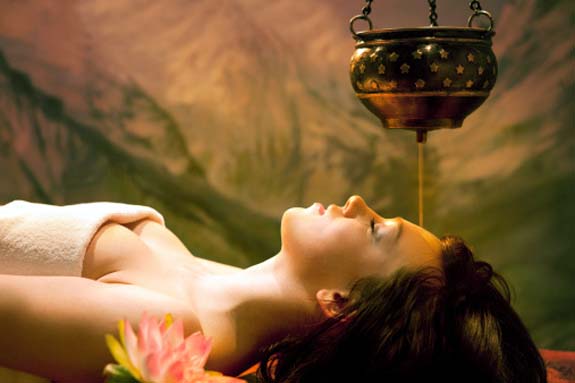Apr 17, 2024
Apr 17, 2024

Ayurveda has two main aims – one is to maintain health and the second is to cure disease. The branch of rasayana or rejuvenation is one of the eight specialized branches of Ayurveda that primarily deals with the maintenance of health. Rasayana is defined as any herb, food, or activity which confers youthfulness and cures diseases. If taken in a proper way, the rasayana prevents early aging and keeps you young and active both physically and mentally.
The literal meaning of rasayana is “augmentation of rasa”, the vital fluid produced by the digestion of food. Rasa provides nutrition, enhances the immunity, and sustains life. Rasayana is the method of treatmentthrough which the rasa is maintained in the body. The purpose ofrasayana is to give strength, immunity, ojus, vitality, will power and determination, and to strengthen the sense faculties, so that you are not exposed to sickness and disease as long as you live.
Types of Rejuvenation therapy:
Depending on the aim or result produced, rasayana is of three types: Naimittika rasayana, Ajasrikarasayana, and Kamya rasayana.
Naimittika rasayana (nimitt – Sanskrit for “cause”) is given to combat or balance a specific cause, which is causing a disease in the body. Some examples of this rasayana are Dhatri rasayana, Mandookaparnirasayana, Brahmi rasayana, and Triphala rasayana.
Ajasrika rasayana is used to maintain good health and improve the quality of life through a healthy lifestyle, diet, or exercise. It includes use of milk, ghee, honey and adopting the principles of proper sleep and celibacy.
Kamya rasayana is used to fulfill a wish or desire or to serve a special purpose (kama - desire). It is of four types:
Depending on the method of administration, the rasayanas are further classified into two types: Kutipraveshika and Vatatapika. Kutipraveshika (kuti – cottage, pravesha – enter) is a therapy in which the person lives in a specially prepared cottage for a long period while taking various rasayana herbs. This rasayana was practiced by the royal and wealthy families of ancient India.Vatatapika, on the other hand, does not bear stringent rules and can be practiced in your routine life. This is rightly indicated in the name “vatatapika”, where “vata” means air, and “atapa” means heat or sun. So this is a method of taking rasayana, while a person remains exposed to air and heat.
Vatatapika method is good for people who are engaged in every day life activities. Some special formulas of this category include Chyavanaprasha, Brahma rasayana Shilajitu rasayana, Amalakirasayana, Haritaki rasayana, Pippali rasayana, Lohadi rasayana and Loha shilajitu rasayana. A total of 63 combinations of various rejuvenation formulae are described in the Charaka samhita.
Charaka Samhita describes another interesting type of rasayana known as the Droni praveshika rasayana. In this therapy, the person drinks the juices of special herbs prepared by the physician and subsequently enters a special type of covered boat (droni) designed for this purpose. At the end of this therapy, the person attains a healthy body and mind, sharp intellect, extra-powerful sense faculties, and a long lifespan.
Being a holistic science with equal focus on the body, mind, and soul, Ayurveda also describes a type of rasayana for psychological and spiritual health. Called as “Achara rasayana”, this type does not require internal administration of rejuvenating formulas. “Achara” literally means “discipline”.
Following the rules relating to eating, sleeping, and celibacy create rejuvenation in a person. In addition, following a sattvik diet and life style, speaking the truth, practicing non-violence, living in harmony with the nature, following social ethics and conducts, are all included under this category of rasayana. Following these principles leads to formation of high quality dhatus (tissues) and increases the quantity and quality of ojus, a vital factor for health and immunity. Hence, a person can get the same benefits as attained by internal administration of rasayana.
All therapies in Ayurveda aim to provide complete health – physical, mental, and spiritual - so that people can engage in achieving the real goal of life—self-realization. The rasayana therapy makes it easily possible with its remarkable benefits on health, immunity, and longevity.
Image (c) gettyimages.com
03-May-2014
More by : Dr. Prabhat Kumar Tiwari